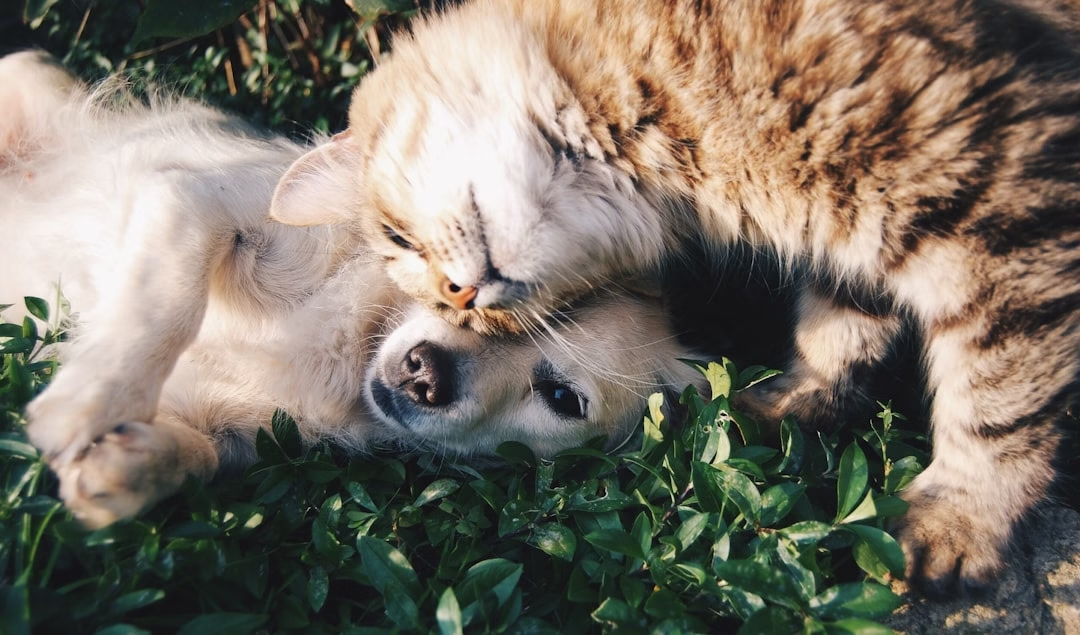Introduction
Moving can be a whirlwind of emotions and tasks, but when it comes to relocating with your furry family member, things can get a tad more complex. Whether you’re crossing state lines or heading overseas, ensuring a seamless, stress-free pet move requires a bit of extra planning. But fear not! With the right steps, you can make the transition smooth for both you and your pet. Here, we’ll explore some essential pet relocation tips to get you started.
Understand Pet Travel Regulations
 Image courtesy: Unsplash
Image courtesy: Unsplash
When it comes to moving your furry family member across borders, understanding pet travel regulations is essential for a smooth experience. Different countries have their own rules and requirements, and it’s crucial to get familiar with them to avoid any hiccups. Let’s break down how to navigate this process successfully.
Research Country-Specific Requirements
One of the first things you should do is research the pet import requirements of the destination country. Each country has specific regulations concerning pet relocation, ranging from vaccination requirements to quarantine periods. Some countries might require a rabies vaccination at least 30 days prior to entry, while others may need additional vaccinations or blood tests. You can usually find this information by visiting the official website of your destination’s government or contacting their consulate.
Here’s a quick checklist of what to look for:
– Mandatory vaccinations and preventive treatments
– Import permits or specific documentation
– Quarantine laws and duration
– Allowed breeds or pet types
Gathering all this information well in advance can save you a lot of stress and ensure a smoother journey for both you and your pet.
Consult with a Veterinarian
Scheduling a vet visit is a significant part of planning a stress-free pet relocation. A veterinarian can guide you through health checks and ensure that your pet is up-to-date with all necessary vaccinations. They can also help you understand any health risks associated with traveling, and provide tips to keep your pet calm and comfortable throughout the process.
Additionally, your vet can recommend precautionary medications or supplements to mitigate travel anxiety or motion sickness, enhancing your pet’s travel experience.
Obtain Necessary Pet Passports and Certificates
To cross international borders, pets often require documentation like a pet passport and health certificate. A pet passport includes details about your pet’s microchip, vaccination history, and health status, functioning as a travel document.
Ensure that each certificate or document is signed by an accredited vet, and double-check that all paperwork aligns with your destination’s requirements. Having these documents organized will make the customs process much less daunting.
Choose the Right Travel Crate
Selecting the correct travel crate is pivotal to ensuring your pet’s comfort and safety during transit. The crate serves as your pet’s little sanctuary, offering them solace amidst the chaos of travel.
Importance of Size and Comfort
A well-fitting crate ensures your pet’s comfort throughout the journey. The ideal crate should be large enough for your pet to stand, turn around, and lie down comfortably. The added comfort can help reduce stress—another key factor in a successful, seamless relocation.
Consider adding some soft bedding or familiar items like a favorite toy or blanket. These comforting scents provide reassurance and can significantly ease your pet’s anxiety.
Crate Acclimatization Tips
Introducing your pet to their travel crate should be a gradual process, starting well before the move. Here are some tips to help your pet acclimate:
– Familiarization: Begin by leaving the crate in your pet’s living area with the door open, allowing them to explore and enter at their own pace.
– Positive Reinforcement: Use treats and praises when your pet enters or uses the crate, associating it with positive experiences.
– Short Practice Sessions: Once your pet is comfortable, practice closing the door for short durations, gradually increasing the time to build their comfort level.
Patience is key here. A relaxed pet makes for a more pleasant travel experience for everyone involved.
Airline-Approved Crate Guidelines
If you’re flying for your relocation, it’s important to adhere to airline-specific crate guidelines. Most airlines require that crates meet International Air Transport Association (IATA) standards. This means it should have sufficient ventilation, a secure latch, and no internal protrusions that could harm your pet.
Always double-check with the airline for any additional crate requirements, as policies can vary. Keep in mind that adherence to these guidelines isn’t just about compliance; it ensures your pet’s safe and comfortable passage to their new home.
By following these essential tips, you’ll be well on your way to orchestrating a seamless pet relocation experience. Your furry friend deserves a stress-free journey, and with careful planning and preparation, you can make that a reality. Safe travels to you and your pet!
Plan Ahead for the Journey
Relocating with a pet is no small feat, but with some careful planning, you can make the experience as stress-free as possible. Your furry friend is counting on you to navigate the ins and outs of travel, so let’s dive into how you can plan ahead for the journey.
Scheduling and Booking Flights
When it comes to scheduling and booking flights, timing is key. Airlines often have specific regulations about pet travel, so start by exploring their pet policies. Consider booking a direct flight if possible to minimize layovers and reduce the time your pet spends in a carrier. Flights during less busy times, such as mid-week, may also offer a quieter, less stressful experience for your pet.
Once you’ve identified your ideal flight, book early to ensure there’s space for your pet. Remember, airlines usually have a maximum number of pets allowed in the cabin, and timing your journey strategically can make all the difference in keeping your pet calm and comfortable.
Pre-Travel Preparations
Before the big move, make sure you have all the necessary documentation. This might include health certificates, vaccination records, microchip information, and any relevant travel permits, especially for international travel. Visit your veterinarian to get a clean bill of health for your pet and ensure they’re fit to fly.
In the weeks leading up to your trip, begin familiarizing your pet with their carrier. Start by allowing them to explore it at home with the door open, so it becomes a safe, cozy place. You can even toss in a few treats or their favorite blanket to make it inviting. Gradually increase the time they spend inside to help ease any anxiety.
Packing Essentials for Your Pet
Packing for your pet requires a few unique considerations. Create a checklist of essentials your pet will need during the journey, such as:
– A comfy carrier (ensure it’s airline-approved)
– Food and water dishes
– A leash and collar with ID tags
– Copies of their medical and travel documents
– Familiar items like a favorite toy or blanket
– A small supply of their regular food and treats
– Waste bags or a portable litter box
Having everything ready and within reach will help you feel more organized and assure your pet knows they’re in safe hands.
Acclimate Your Pet to the New Environment
 Image courtesy: Unsplash
Image courtesy: Unsplash
Adjusting to new surroundings can be challenging for pets, but with patience and a little forethought, their transition can be smooth and peaceful.
Transitioning Your Pet Gradually
When you arrive at your new home, introduce your pet to their new environment gradually. Start by letting them explore one room at a time. This allows them to become familiar with one area before being overwhelmed by the entire space. Spend quality time in these areas and stay with them to offer reassurance and support.
Pay attention to your pet’s reactions and behaviors. Some pets may adapt quickly, while others might need more time to settle. Stay patient and comforting, offering plenty of affection and encouragement as they explore their new home.
Creating a Familiar Space
Help your pet feel secure by establishing a familiar space just for them. Choose a quiet corner where you can set up their bed, toys, and other belongings. This designated area should serve as a safe retreat where they can relax amidst the changes happening around them.
If your pet had a specific spot they loved in your previous home, try to recreate a similar environment. Familiar scents and objects can work wonders in making the new place feel like home.
Maintaining Routine and Comfort
Maintaining a consistent routine can be incredibly reassuring for pets. Try to keep their feeding, walking, and playtimes as close to the usual schedule as possible. Familiar routines provide a sense of normalcy that can be grounding amidst the chaos of a move.
If your pet seems anxious, consider playing soothing music or using pet-safe calming sprays to create a peaceful atmosphere. Above all, ensure you’re giving them plenty of attention and love—they’ll be looking to you for cues and comfort as they navigate this change.
With a little foresight and a lot of love, relocating your pet can be a seamless experience. Take things step by step, and soon enough, both you and your pet will feel right at home, ready to explore a new world together.
Conclusion
Relocating with your furry friend doesn’t have to be a daunting task. By prioritizing the preparation of necessary travel documents, choosing a reliable pet relocation service, and understanding pet travel essentials, you can ensure a smooth transition for your pet. Remember to comfort your pet before, during, and after the move to alleviate any anxiety they may feel. With these mindful steps, your pet can enjoy a new home just as much as you do. Happy travels!

